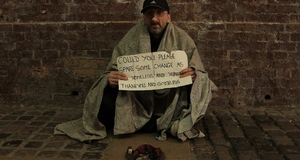Featured Article:Minorities and Homelessness in the United States and Europe: A Comparative AnalysisIII. ResultsThe results of the study as described thus far are discussed for each region below. EuropeThis section overviews the situation in the selected European countries of Finland, Sweden, the UK, France, and Italy with regards to: social rights for the undocumented and other migrants; discrimination in the employment and housing markets; professional opinions as to the drivers and causes of homelessness and minority overrepresentation among the homeless, where responses were received from the European organizations contacted in each country. According to NGO professionals from the Helsinki Deaconess Institute (HDI) in Finland, the main drivers of homelessness there are substance abuse problems in the case of short-term homelessness, and lack of affordable housing in the case of long term homelessness. However, it is not only a lack of affordable housing; there are simply not enough places to rent, which drive up costs. Other individual level vulnerabilities mentioned were mental illnesses and physical disabilities (HDI representative, July 10, 2012), email message to author). Within the context of other structural level factors as being drivers of homelessness, most of the clients served by the Institute have only completed nine years of primary education. More specifically, the table below displays the reported education level of the clients served:Table 3. Education levels of clients at the Helsinki Deaconess Institute
Source: Helsinki Deaconess Institute Representative, July 10, 2012, email message to author. Even though some have trade school or a degree, none of the HDI clients are employed. The employment market is even more restricted to immigrants, because they lack suitable education and language skills (HDI representative, July 10, 2012, email message to author). As seen earlier in table 1, immigrants from Africa, Iran, Iraq, and Eastern European Roma make up 20% of the homeless population in Finland, while they make up only 2.5% of the total Finnish population. This overrepresentation seems to be driven by discrimination in the housing and employment markets: “when the landlord has a choice to make, he will chose somebody who is working and who was born here in Finland” (HDI representative, July 10, 2012, email message to author). Immigrants in Finland are less likely to have individual level vulnerabilities such as substance abuse, and are more likely to maintain a government subsidized apartment when awarded one (HDI representative, July 10, 2012, email message to author). Only documented immigrants can receive housing assistance. Undocumented immigrants can only stay overnight in overnight emergency service centers. The situation for Roma is noted to be the worst, despite their EU citizenship; they are least likely to access housing. The Helsinki Deaconess Institute operates a medical center where undocumented people can receive medical services they would otherwise not be eligible for (HDI representative, July 10, 2012, email message to author). Based on these inputs, homelessness in Finland can be explained by individual as well as structural level factors such as low education levels and skills. Overrepresentation of immigrants among the homeless is explained by social exclusion and direct discrimination in the housing and employment markets. While the undocumented have no rights and access to benefits, documented immigrants also face obstacles due to their foreign origin and language barrier. This is especially a problem if landlords, for example, prefer to rent to Finns. The situation in Sweden is similar. Based on input from the Swedish National Board of Health and Welfare, the manifestation of homelessness in Sweden is similar to that in Finland as reported by HDI. The National Board of Health and Welfare is a government agency that falls under the Ministry of Health and Social Affairs with a task to collect information on various social issues, among other tasks. According to a representative from the Board, substance abuse is a factor in approximately 40% of people that are homeless (Annika Remaeus, July 3, 2012, email message to author). As in Finland, the housing market is a main structural obstacle, as landlords are very strict in refusing to rent to the unemployed. Just as in Finland, a very small number of homeless are employed; only approximately 5% have a full or part time job (Annika Remaeus, July 3, 2012, email message to author). Mrs. Remaeus stated that those most likely to have an education are immigrants, but they cannot use it in the labor market because of the language barrier. As was seen earlier in table 1, immigrants from Somalia, Iran, Iraq, Turkey, and Poland make up 34% of the homeless population while they are only 14% of the total population. Mrs. Remaeus stated that the main reason for this overrepresentation of immigrants is discrimination in the labor market, as immigrants are not awarded permanent jobs. Landlords in turn only accept people with permanent jobs. It is unclear how many of the homeless immigrants are undocumented. In Sweden, undocumented immigrants do not have any rights to social services (Annika Remaeus, July 3, 2012, email message to author). In Sweden (as in Finland), homelessness among immigrants can be considered a failure of integration, though government authorities do not seem to acknowledge this link, and dispute data that does exist. At a Washington, DC Migration Policy Institute panel regarding the role of national governments in promoting immigrant integration, I asked the Swedish State Secretary to the Minister for Integration, Jasenko Selimovic, to elaborate on immigrant homelessness in Sweden. He stated: “migrant homelessness is not a huge problem of concern…there is a lack of statistics to really show this…the situation applies to very young immigrants out of the system” (Jasenko Selimovic, May 23, 2012, MPI Conference). For the UK, it is more difficult to determine the immigration status of the homeless as it is to determine the race based on available data. In the UK, homelessness data includes statistics on the race of the homeless, and as seen in table 2 earlier, blacks, Asians, and other white Europeans such as Eastern Europeans (mostly Roma), and Irish, are all overrepresented among the homeless, with blacks and Eastern Europeans showing the biggest overrepresentation. The greater likelihood of minority groups in the UK to fall into homelessness parallels their overall standing in other areas of social life. Research by the Council of Europe’s (CoE) European Committee of Social Rights shows discrimination and social exclusion are occurring in the UK. The Committee of Social Rights monitors state parties’ implementation of the European Social Charter, which guarantees a series of economic and social rights to all. In a January 2012 report, the Committee found that the UK did not effectively guarantee Roma families’ right to housing. The government refused the Roma camping permits at a rate of 90% (CoE 2012, 10). In addition, there is a length of residence requirement known as the Habitual Residence Test (HRT) that all applicants wanting to receive social housing must fulfill. It was found that the rate of refusal on this basis was “significantly higher” for foreigners than for UK nationals (CoE 2012, 24). The European Committee Against Racism and Intolerance (ECRI), another Council of Europe institution, issued a report in 2010 in which it found that minority groups fare relatively worse in social indicators in the UK. For example, minority pupils were disproportionally excluded from attending school; black children were twice as likely to be excluded than whites, and black Caribbean children in particular were three times as likely to be excluded (ECRI 2010, 28). Therefore, black children automatically start off at disadvantage. There are other indicators as well that can explain why minority groups would be overrepresented among the homeless in the UK. The report also indicated a gap in employment between minority groups and others (ECRI 2010, 30). In addition, black and Bangladeshi households had the lowest levels of owner occupation in 2007, or owned homes, signifying a lack wealth (ECRI 2010, 34). Finally, blacks were overrepresented in the prison population (ECRI 2010, 34). These findings for the UK indicate that discrimination in the housing and social housing market, and overall social exclusion can explain minority homelessness there. With regards to the situation of migrants in particular, there is differential access to social housing and other benefits based on immigration status. The local government councils set up to address housing requests do not have a legal obligation to provide any type of emergency housing assistance to those deemed ineligible for assistance (Shelter.org, 2012). Those not eligible for assistance are “foreign nationals who need permission to enter or remain in the UK” (Shelter.org, 2012). It remains unclear whether overnight shelters in particular require identity checks, forcing the undocumented onto the streets; they would be counted among the homeless by the street outreach count. Homelessness assistance in general in the UK is reserved for British citizens who have not lived abroad, persons legally working in the UK from the European Union and the European Economic Area, and refugees and those granted humanitarian protection; it is important to note that within the context of access to more long term social housing for those non-citizens legally residing, the persons must be employed at the time of application (Shelter.org, 2011). The undocumented also have trouble accessing healthcare and education. There are restrictions on non-emergency healthcare. Furthermore, schools are asked to report undocumented children to the immigration authorities (Migration Policy Institute, 2009). Policies on access to social housing and homelessness assistance are similar in France. In 2007, France adopted a justiciable right to housing law which granted people the right to seek legal redress for lack of access to housing, however, this right is only reserved for legal residents (Feantsa.org, 2007). In the fields of education, healthcare, and other welfare assistance, the undocumented are off the radar as well. According to a 2012 Council of Europe report on France, among immigrants, only documented immigrants have the right to medical checkups; the undocumented are not eligible for State Medical Assistance (CoE 2012, 22-23). Citizens, people from the EU/European Economic Area, and legal citizens have the same level of entitlement to family benefits in the form of monetary assistance, but the undocumented do not have access, and parents of foreign children must produce documents that prove a legal immigration status before receiving such assistance (CoE 2012, 18-22). Furthermore, at the time of the report, the European Social Rights Committee was unclear on whether undocumented children had the right to education in France (CoE 2012, 23). As see in Table 1 earlier, immigrants are overrepresented among the homeless in France, especially those of a different ethnic background. However, it is not only immigrants but also those of an immigrant background or perceived of being immigrant that have difficulties in other social sectors, which could explain minority homelessness in France as well, just as in all of the European countries mentioned to date. First, discrimination exists in the fields of education and employment even when persons are documented. For example, people perceived of being immigrant of North African descent, or people perceive as being Muslim face obstacles in employment. Children with immigrant backgrounds (especially children born in France of North African descent) are overrepresented in poorer performing schools, which are also located in segregated neighborhoods (ECRI 2010, 20-22). Direct discrimination in the housing market is also occurring in France. Even though there is a ban on racial discrimination in housing and there have been court rulings in such cases, a shortage of social housing and low cost rentals ensures competition in this sector. Those of African descent are nine times less likely than French citizens to obtain a private sector apartment applied for (ECRI 2010, 24). The process of allocation of dwellings in the public sector is not transparent and could hide discriminatory practices (ECRI 2010, 24). Among the most vulnerable are Roma migrating from Eastern Europe, despite their EU citizenship. In some municipalities, schools refuse to enroll Roma children in school simply based on their ethnicity (ECRI 2010, 34). Moreover, forced evictions without offers of alternative housing are a constant danger for the Roma in France (ECRI 2010, 33). In Italy, similar trends regarding the Roma population are seen. Between March and May of 2011, Italian local authorities conducted 154 evictions in Rome in a violent manner, affecting 1,800 Roma; those evictions were not in fulfillment with international standards; personal property was destroyed and no alternative housing was provided (U.S. Department of State, 2011). Roma have been experiencing such problems in Italy for years, and they remain segregated, living in substandard housing such as camps on the outskirts of big cities. Roma children are also underrepresented in schools, and a major driver is the substandard living conditions lacking in electricity and running water (CoE 2011, 22). Roma have been pushed into homelessness since at least 2006 when state and local authorities made a “Pact for Security” to solve the “nomad emergency,” which entailed forced evictions en masse without offers of alternative housing (CoE 2011, 40). Given these conditions, it is not surprising we see such overrepresentations of minorities among homeless in Italy. As in France, immigrants of African descent are also vulnerable in Italy. Italy has one of the highest immigration rates in Europe, and there is competition for housing and employment there as well. Immigrants work in the lower wage sector, hence as a group they do not earn as much and have a lower standard of living (CoE 2011, 28). Despite their need for social assistance, only Italian citizens and EU citizens are eligible for family benefits such as monetary allowance and purchasing cards (CoE 2011,19). Third country nationals have been discriminated against in access to public housing regardless of having a legal status. For example, some municipalities introduced a point system for eligibility for public housing where French citizens automatically start off with extra points if they have resided in the particular region for a number of years. In addition, a residence requirement of ten years in Italy or five years in the region is required for third country nationals in some regions (CoE 2011, 44-46). The undocumented only have access to emergency shelter, and in terms of housing, they are the most vulnerable because they are the most likely to end up on the streets, as evictions of undocumented from emergency shelters are not banned (CoE 2011, 43). The European countries discussed in this section were selected as representatives of different models of homelessness data collection and assistance, such as Nordic, Liberal Atlantic, Continental, and Mediterranean. It appears that these different welfare models have no influence on how homelessness manifests in these countries. There is an overwhelming similarity in how the European countries differentiate between nationals and migrants in terms of access to housing and welfare. In all cases, minority homelessness is linked to social exclusion of minorities and direct discrimination in the housing, employment, and education field. Furthermore, in all cases, the undocumented had no rights to homelessness assistance besides overnight emergency shelter stays, and in many cases it is unable to be proven without field research and discussions with social workers whether these shelters actually accepted undocumented migrants. Immigration laws alone do not explain minority homelessness in these European countries, as Roma EU citizens are the most vulnerable in all countries under study. The next section presents the results from field research in the United States. United StatesComparing City and Shelter Demographics Homelessness is an elusive concept, and as previously mentioned, counting the homeless remains challenging for organizations. Nevertheless, I was able to gather limited data hinting that the international problem of minority overrepresentation among the homeless that was found in the preliminary research is reflected at the local level in Washington, Alexandria, and Arlington, specifically in terms of the African American minorities. Although the Community Partnership, a conglomeration of organizations working to end homelessness in Washington, does not issue reports or summaries containing data on the ethnic or racial makeup of the homeless population, I was able to gather some data on clients served by Catholic Charities, which operates the shelters I visited in Washington. Washington, DC has always had a significant African-American population and a strong African-American heritage (Washington.org, 2012) as seen is Figure 1 below. Figure 2 reveals that African Americans are overrepresented among homeless clients that Catholic Charities serves, which could be an indication of a city-wide phenomenon, if it is assumed that other service providers have similar data. Figure 1. Washington, DC demographics
Source: http://quickfacts.census.gov/qfd/states/11000.html Figure 2. Catholic Charities DC Shelter demographics
Source: CC Homeless Management Information Systems Coordinator, June 4, 2012, e-mail message to author. In Northern Virginia, a similar theme emerged. The Arlington shelter I visited serves 44 males and females among which 10 are Caucasian. The Alexandria shelter I visited serves 18 males among which 4 are Caucasian. These are also overrepresentations of minorities. These are the demographics I gathered for Alexandria: Figure 3. Alexandria demographics
Source: http://quickfacts.census.gov/qfd/states/51/5101000.html Figure 4. Alexandria Shelters demographics
Source: Interview with Kevin Mondloch, Christ House Program Director, July 9, 2012. Therefore, while this data is limited in that it does not reflect demographics from all homeless shelters, and it does not provide a more detailed breakdown of minorities to include Hispanics and others, there is enough information to at least assume that homelessness disproportionately affects African-Americans in the DC metro area. Social workers have acknowledged and are aware of this phenomenon as well.Continued on Next Page » Suggested Reading from Inquiries Journal
Inquiries Journal provides undergraduate and graduate students around the world a platform for the wide dissemination of academic work over a range of core disciplines. Representing the work of students from hundreds of institutions around the globe, Inquiries Journal's large database of academic articles is completely free. Learn more | Blog | Submit Latest in Sociology |






















